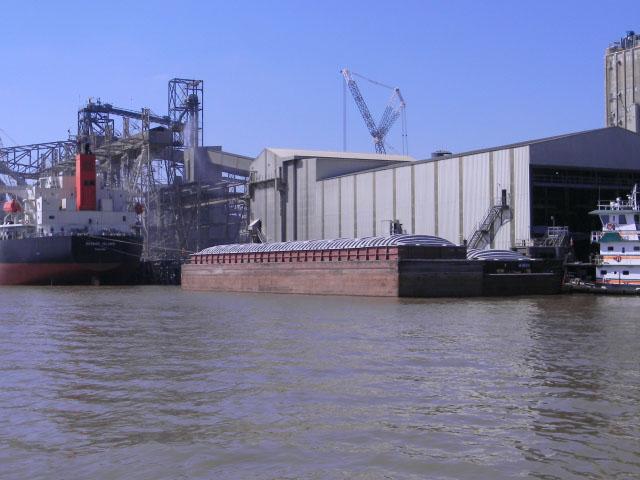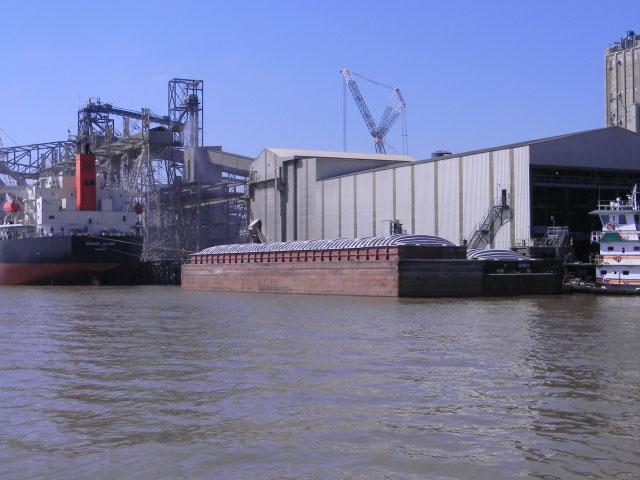An Urban's Rural View
Wanted: An Ag Trade Strategy
The waning weeks of 2022 saw several pieces of news on the agricultural-trade front. For once, the news was mostly good. Whether it will improve the long-term outlook for ag exports, though, is debatable.
Here are the December 2022 ag-trade headlines:
-- "Senate Confirms Biden Trade Team," https://www.dtnpf.com/… (Finally, two years in, the Senate has confirmed an undersecretary for trade at USDA, Alexis Taylor, and a chief ag negotiator at USTR, Doug McKalip.)
-- "U.S., Mexican Officials Meet About Biotech Corn Decree, But Few Details Released," https://www.dtnpf.com/… (If Mexico's proposal on biotech corn isn't satisfactory, the U.S. could initiate a dispute resolution case under the U.S. Mexico Canada Agreement.)
-- "U.S. Initiates Second USMCA Dispute on Canadian Dairy TRQ Policies," https://www.fas.usda.gov/… (U.S. negotiators are doubling down on their case against Canada's restrictions on dairy imports.)
-- "USDA Invests More Than $200 Million to Expand Agricultural Exports Through Market Development Programs," https://www.fas.usda.gov/… (Programs that match government dollars with dollars from 80 groups that promote ag exports are disbursing $202.7 million, about the same level as in recent years.)
Not bad news, certainly, but these steps are like blocking and tackling in football. They're about executing on a game plan. They may help win today's game but they offer nothing for tomorrow's. What U.S. ag exports need is a new game plan, a strategy aimed at maintaining or even expanding ag exports by penetrating deeper into existing markets and developing new ones.
Exports are critical to the prosperity of U.S. agriculture. American farmers and ranchers produce way more than their domestic market can absorb. Measured by value, a quarter of their output is exported. (https://www.fb.org/…)
P[L1] D[0x0] M[300x250] OOP[F] ADUNIT[] T[]
In recent years, ag exports have been robust. In fiscal 2022 they rose to a record $196.4 billion. USDA predicts them at a still very strong $190 billion this year.
For exports to stay at this level over time, much less expand, will require more than blocking and tackling. I'd argue one of two things must happen. Either China must continue to buy enormous quantities of U.S. ag products or the U.S. must get over its aversion to new free-trade agreements. (https://www.ers.usda.gov/…)
Neither seems likely.
In an increasingly "decoupled," "deglobalized" world marked by U.S.-China tensions, China will hesitate to rely too much on U.S. farms, just as the U.S. will rely less on China's factories. China is diversifying its food sources.
Already, Brazil is China's No. 1 ag supplier by a wide margin, and China is looking to increase its imports from other suppliers, including Russia. China is also striving to produce more of its own food.
China currently buys a big chunk of U.S. ag exports -- $35.9 billion worth in 2021 -- and soybeans account for 40% of those exports. Can exports at this level continue?
Last October, China lowered the prescribed protein content in swine feed by 1% and in poultry feed by 1.5%. Rabobank analysts said that in their view, "the purpose of this low-protein feed formula is to reduce the dependence on US soybeans." (https://research.rabobank.com/…)
If the prospects for exports to China are shaky, the outlook for free-trade agreements is even dicier.
Donald Trump withdrew the U.S. from the Trans-Pacific Partnership on his first day in office six years ago. Neither he nor Joe Biden have been moved by pleas from U.S. agriculture to rejoin the TPP's successor, the Comprehensive and Progressive Agreement for Trans-Pacific Partnership or CPTPP.
Other countries have been signing free-trade deals. China is negotiating eight in addition to the 17 it already has in place. The U.S., which has 14, hasn't negotiated any since TPP.
Instead, President Trump built his trade policy around bashing other countries with high tariffs. President Biden's is built around promoting domestic manufacturing through subsidies and buy-America measures. Neither president has made any effort to negotiate free-trade agreements.
In fairness, that's because there's so little popular support for them. FTAs have become the scapegoat for many of the country's woes. Politicians won't touch them; they're a ticket to losing elections.
Politicians understand that free-trade agreements can expand ag and other U.S. exports, but in any negotiation you need to give something to get something. The pols would like American exporters to have greater access to overseas markets but they aren't willing to allow greater access to our market in return.
Not everyone has given up. There are trade groups lobbying for trade agreements, including the American Farm Bureau Federation and the U.S. Chamber of Commerce.
A recent report from the Asia Society Policy Institute advocates rejoining the CPTPP by renegotiating it with improvements in 12 areas, including stricter rules of origin. Rejoining, the study argues, is "a conversation worth having in light of the importance of the Asia-Pacific region to long-term U.S. competitiveness and national security interests."
But the report acknowledges it will be challenging to generate support for a renegotiation, either domestically or from the 11 CPTPP member countries. That is probably an understatement.
Urban Lehner can be reached at urbanize@gmail.com
(c) Copyright 2023 DTN, LLC. All rights reserved.






Comments
To comment, please Log In or Join our Community .